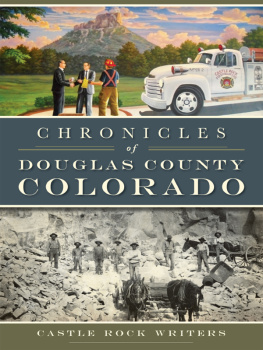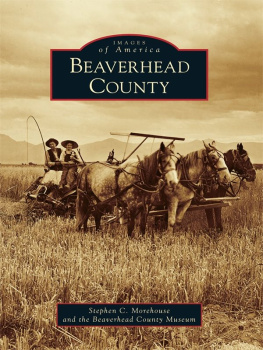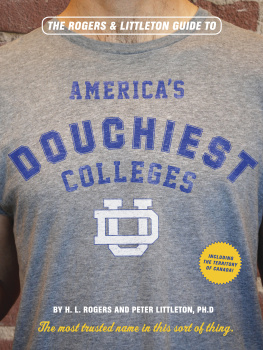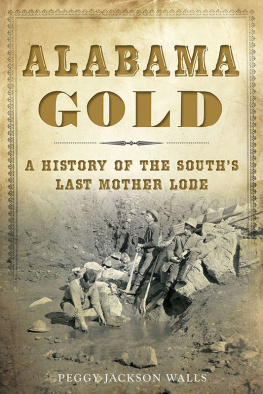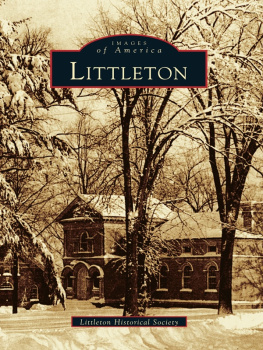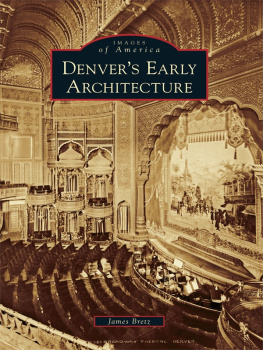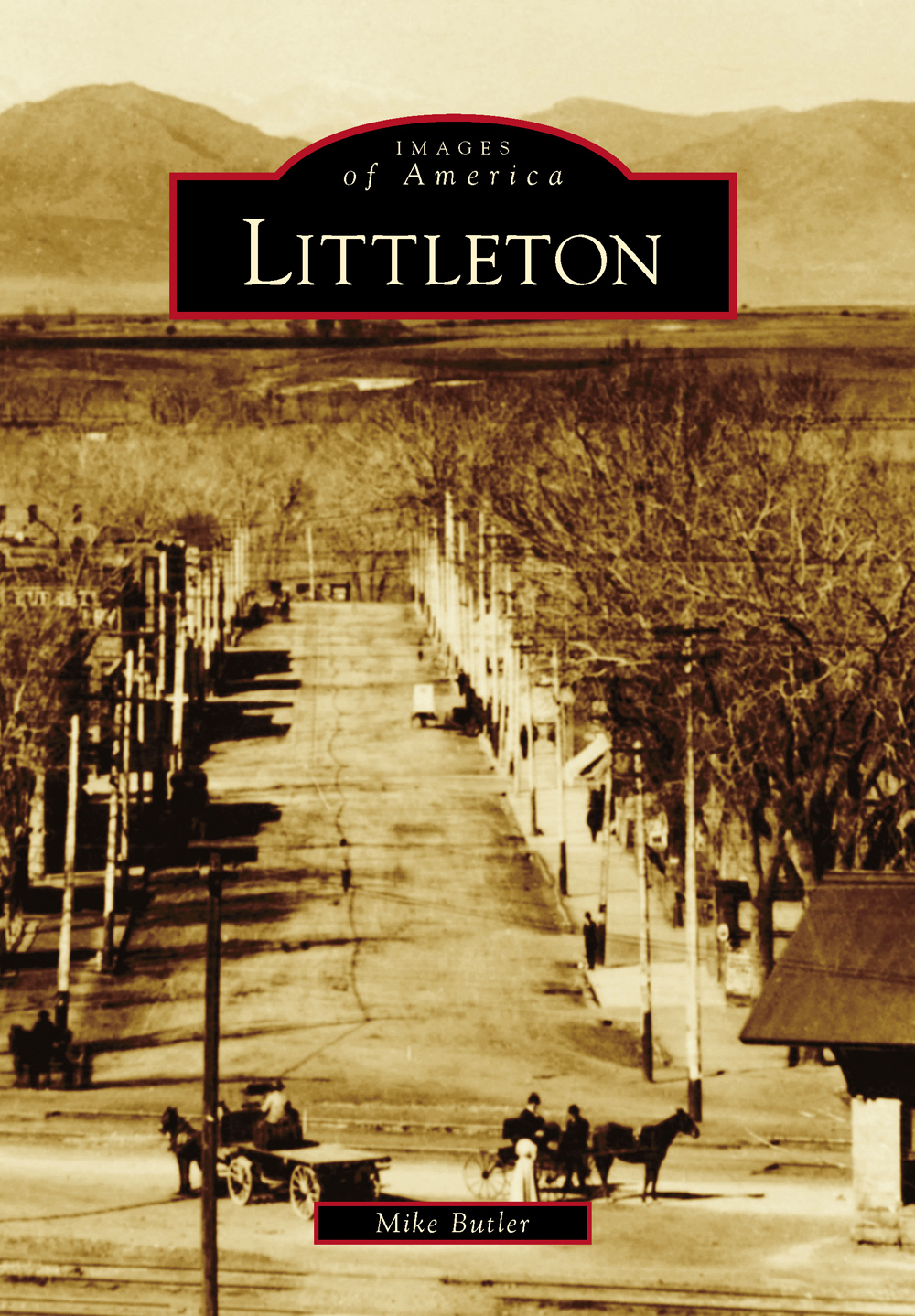
IMAGES
of America
LITTLETON

ARAPAHOE COUNTY GOOD ROADS PROMOTERS, C. 1920. The Good Roads Movement was begun in May 1880 by the League of American Wheelmen (bicyclists) to promote paved roads across the country. The movement was adopted by automobile enthusiasts in the early 1900s. Here, the Arapahoe County group has gathered in Littleton at the intersection of Main and Nevada Streets. (Littleton Museum.)
ON THE COVER: LITTLETON MAIN STREET, C. 1910. The view in this image looks west from the Denver & Rio Grande Railroad depot (lower right) down Main Street to the Rough and Ready Flour Mill (tallest white building on the left). More of this view can be seen on . (Littleton Museum.)
IMAGES
of America
LITTLETON
Mike Butler

Copyright 2015 by Mike Butler
ISBN 978-1-4671-3255-8
Ebook ISBN 9781439649237
Published by Arcadia Publishing
Charleston, South Carolina
Library of Congress Control Number: 2014954334
For all general information, please contact Arcadia Publishing:
Telephone 843-853-2070
Fax 843-853-0044
E-mail
For customer service and orders:
Toll-Free 1-888-313-2665
Visit us on the Internet at www.arcadiapublishing.com
CONTENTS
ACKNOWLEDGMENTS
Thanks go to Jennifer Hankinson of the Littleton Museum, who graciously spent many hours helping me find just the right images. Also, thanks go to editor Stacia Bannerman at Arcadia Publishing, who has guided me through three books and has been wonderful to work with. As always, any errors or omissions in the photographic captions or historical text provided in this book are completely the responsibility of the author.
Historical photographs in the book annotated Littleton Museum are from the collection of the Littleton Museum and are reproduced with the museums permission. Other historical photographs are from the Library of Congress and are annotated as such. Photographs with no annotation are provided by the author.
INTRODUCTION
Gold brought thousands of fortune seekers westward to Colorado (then still a part of Kansas Territory) in 1858 and 1859. William Green Russells party of miners from Georgia discovered gold in 1858 where Little Dry Creek joins the South Platte River, about four miles north of present-day Littleton. Gold was also found where Cherry Creek joins the South Platte a few miles farther north, where Denver was founded. In 1859, large gold strikes were also made in the mountains west of Denver at what would become Georgetown and Idaho Springs. It is estimated that 100,000 gold seekers flocked to Colorado in 1859.
Miners, horses, and mules all required food, and some enterprising families soon abandoned mining in favor of raising crops in the fertile soils along the South Platte. Most of these farms required irrigation in order to produce crops in the arid climate. A number of irrigation ditches was soon dug from the South Platte to the farms. One of the main ditches was developed by the Capital Hydraulic Company. It started from the South Platte about a half-mile south of what is now Bowles Avenue in Littleton, and its destination was the City Park area in Denver, over 10 miles away.
Construction of the Capital Hydraulic Ditch (which soon became known as the City Ditch) began in 1860. By 1861, the ditch had only progressed a couple of miles northward, and the project engineer was dismissed. Richard Sullivan Little, trained in surveying and civil engineering at the University of Vermont, was then hired to guide the project. Little was born in Grafton, New Hampshire, on May 12, 1829. After his university studies, he performed engineering surveys for a number of Midwestern railroad companies. Little became discouraged when he was often not paid by these companies, so he decided to head west to the Colorado goldfield country, where money was supposedly plentiful.
Soon after Colorado Territory was formed in 1861, Richard Little started work on the City Ditch. Unfortunately, the Civil War brought widespread financial difficulties, and work on the ditch was halted until 1864. In the meantime, Little recognized the potential value of farms along the South Platte River, and he filed on acreages just east of the river near the headgate of the City Ditch, acquiring some 200 acres. Littles land eventually became downtown Littleton and Arapahoe Community College.
The early South Platte farmers were very successful in growing wheat, oats, potatoes, corn, barley, and various fruit trees and vegetables. They also raised livestocktax-assessment records for 1868 showed that Richard Little had 70 calves and 6 swines, along with 23 cows and 5 horses. In order to process the wheat, Little joined with other local farmers such as Joseph Bowles, Peter Magnes, John Lilley, and John McBroom to construct the Rough and Ready Flour Mill in 1867 at the site of what is today the intersection of Santa Fe Drive and Bowles Avenue in Littleton. The flour mill was so successful that it was immediately rebuilt after being burned down in both 1872 and 1874.
The Post Office Department, recognizing the growth of settlements around Littles ranch, officially established Littleton Post Office in 1869. Richard Little was appointed the first postmaster. Using his talents as a surveyor, he drew up a map of streets and lots on his property, which he presented at the Arapahoe County Courthouse in Denver in 1872. With his Littleton plat on file with the county, Little began selling lots and soon had plenty of buyers, as the Denver & Rio Grande Railroad (D&RG) building south from Denver laid rails at the eastern boundary of his property. When the D&RG stone depot was built in Littleton in 1875, the town was officially booming, and Richard Little became fairly wealthy from his land sales.
Workers at the Rough and Ready Flour Mill needed a place to stay, and they were accommodated in 1869 when a two-story inn called the Bell House was built across the street by John Bell. In 1876, it became known as the Harwood Inn, named after new owners John and Mary Harwood, who were the parents of Richard Littles wife, Angeline. Other early businesses arose as a result of local farm production, including the Littleton Creamery (founded by Julius D. Hill, who had built a general store near the inn in 1872) and the Merry Pickle Canning Company (which employed 50 workers canning vegetables and fruits grown at Pickletown, located next to the High Line Canal between what are today Broadway and South Clarkson Street).
The High Line Canal was built from 1879 to 1883 for irrigation purposes to entice settlers headed west to stop, grow crops and create communities on the high plains at the foot of the Rocky Mountains, according to the board of Denver Water, present owner of the canal. The 71-mile-long canal was originally built by a group of English investors for a total of $650,000. Denver Water now spends over $1 million per year maintaining the canal, which begins with a diversion from the South Platte River in Waterton Canyon, southwest of Littleton, and meanders northeast to Green Valley Ranch. Today, the maintenance road along the canal is a busy recreation path for more than 500,000 hikers, bikers, and joggers annually.
Prominent early Littleton families included the Little family, the Bowles family, and then the Bemis family, which arrived from Massachusetts in 1883. This family and its descendants influenced Littleton life, politics, and development for most of a century. Fred Bemis was born in Spencer, Massachusetts, on May 10, 1862, and married Elizabeth Granger on May 1, 1883. Fred grew up on a farm specializing in dairy cattle. When he and Elizabeth moved to Littleton, they occupied a house located on Main Street where Valley Feed & Lawn Center is today. Behind the home, toward the South Platte River, they raised alfalfa and dairy cattle. All three Bemis childrenLuther, Ella, and Edwinwere born in this home. In 1884, Bemis returned to Massachusetts and purchased a carload of Jersey cattle, which were shipped to Littleton, the first registered Jerseys in Colorado. In 1889, Bemis completed his new home east of the D&RG Railroad tracks and directly south of where the new county courthouse would be built. This enabled him to have a much larger farm, where he raised cattle and horses. Bemis was so involved in the livestock business that he became one of the founding members of the National Western Stock Show in Denver.
Next page

